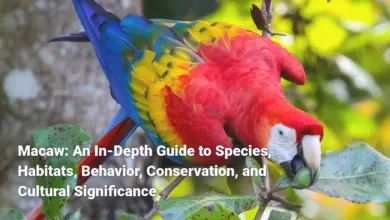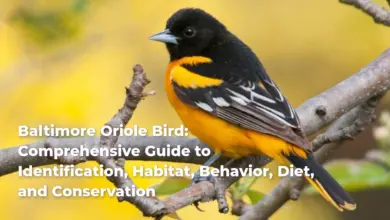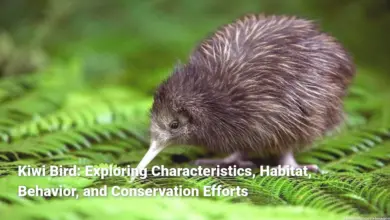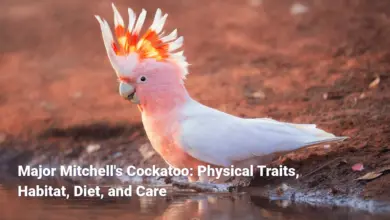Nuthatch Bird: Identification, Types, Behavior, and Backyard Tips
Nuthatch Birds are small, agile birds belonging to the family Sittidae, known for their unique ability to navigate trees in various orientations, including headfirst descent. Their charming antics and striking appearances have made them favorites among birdwatchers and nature enthusiasts alike. With distinctive features and behaviors that set them apart from other forest birds, Nuthatch Birds are fascinating subjects for observation and study. There are four main species commonly found in North America: the White-breasted Nuthatch, the Red-breasted Nuthatch, the Brown-headed Nuthatch, and the Pygmy Nuthatch. Each species carries its own unique characteristics and adaptations, allowing them to thrive in diverse habitats.
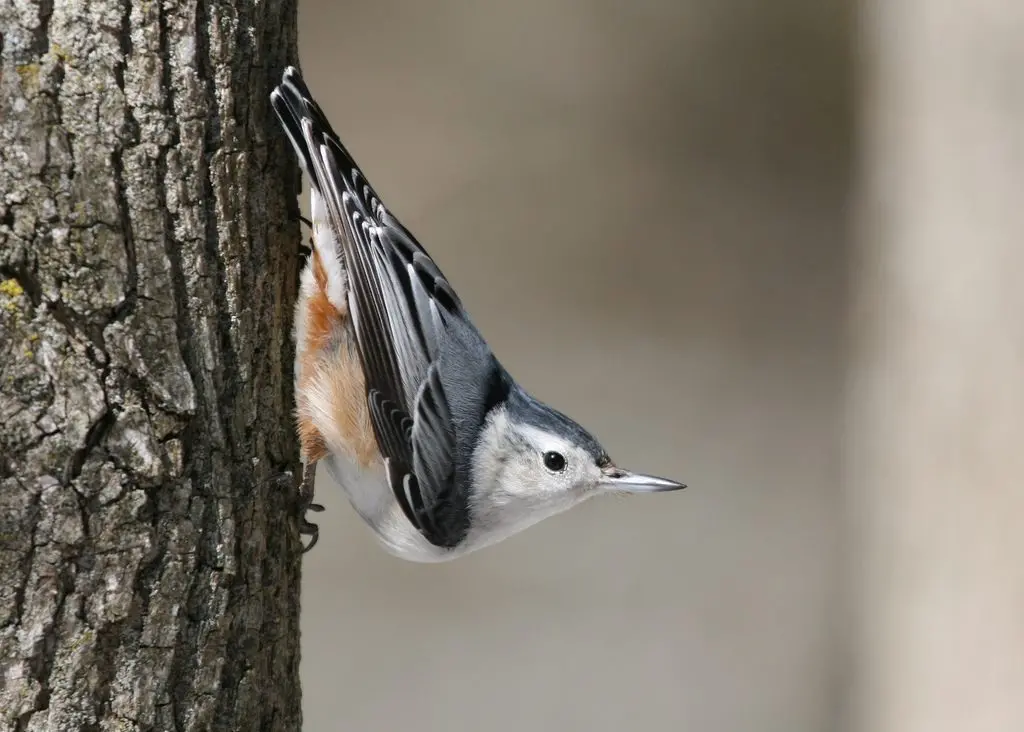
In this article, we will explore the identification, characteristics, habitats, behaviors, vocalizations, and ways to attract nuthatches to our backyards. We will delve into their physical descriptions, behavioral patterns, and the ecological roles they play within their environments. As we unravel the captivating world of nuthatches, you will gain a deeper appreciation for these remarkable birds and their unique adaptations.
Identification and Characteristics
Identifying nuthatches can be a delightful challenge. These small birds possess various characteristics that make them particularly fascinating. For instance, their acrobatic abilities enable them to move easily around tree trunks and branches, often feeding upside down. Their physical adaptations, including short tails and strong feet, contribute to their unique foraging behaviors.
- Physical Traits:
- Compact body with short tails and large heads.
- Strong, pointed bills designed for probing under bark.
- Distinctive coloration and patterns that vary among species.
Physical Description of Nuthatch Birds
Nuthatches are compact birds, with most species ranging from 10 to 14 centimeters in length. Their bodies are stocky, and they have short tails and broad heads, giving them a distinctive profile. The legs of nuthatches are particularly strong, allowing them to cling tightly to tree trunks as they forage for food. Their bills are sharp and pointed, ideal for prying open seeds and probing into crevices.
- White-breasted Nuthatch (Sitta carolinensis):
- Size: Approximately 13-14 cm in length.
- Appearance: Blue-gray back, white face, and a black cap; rusty underparts near the tail.
- Behavior: Moves down trees headfirst, easily foraging among bark crevices.
- Red-breasted Nuthatch (Sitta canadensis):
- Size: About 11 cm in length.
- Appearance: Blue-gray back, distinctive red underbelly, black cap, and white eyebrow stripe.
- Behavior: Energetic and agile, often seen moving sideways along tree bark.
- Brown-headed Nuthatch (Sitta pusilla):
- Size: Ranges from 11-13 cm in length.
- Appearance: Brown cap, grayish-white underparts, and a sociable demeanor.
- Behavior: Utilizes tools for foraging and is known for cooperative breeding.
- Pygmy Nuthatch (Sitta pygmaea):
- Size: Approximately 10-12 cm in length.
- Appearance: Dark gray cap, light-colored cheeks, and a slate-gray back.
- Behavior: Frequently forages in small groups, often creating an energetic atmosphere around them.
Nuthatches are typically found in various wooded habitats, including deciduous and mixed forests. Their unique ability to adapt to changing surroundings and efficient foraging behavior ensures their survival across a vast range of ecosystems.
Distinguishing Features of Different Nuthatch Bird Species
The differences among species of nuthatches are fascinating and serve as a testament to their evolutionary adaptations. You can distinguish them not only by size and appearance but also by their habitats and behaviors.
| Species Name | Size (cm) | Coloration | Habitat | Unique Behavior |
|---|---|---|---|---|
| White-breasted Nuthatch | 13–14 | Blue-gray, white underparts, black cap | Deciduous forests, parks | Headfirst descent along tree trunks |
| Red-breasted Nuthatch | 11 | Blue-gray with red underparts | Coniferous forests, high elevations | Energetically forages sideways and upside down |
| Brown-headed Nuthatch | 11–13 | Brown cap, gray underparts | Southeastern pine forests | Uses tools like bark pieces during foraging |
| Pygmy Nuthatch | 10–12 | Dark cap, pale cheeks | Dense coniferous forests | Often forages in flocks and produces high-pitched calls |
These distinctions provide birdwatchers with valuable information for identification. By observing their unique markings and behaviors, bird lovers can enhance their experience while in the field and contribute to citizen science initiatives that further our understanding of these charming acrobats.
Types of Nuthatch Birds
While Nuthatches are generally recognized as small, acrobatic birds, they can be classified into specific types based on characteristic features and behaviors. Each species of nuthatch provides a unique contribution to its environment, as their foraging techniques and dietary preferences reflect their evolutionary adaptations.
- White-breasted Nuthatch (Sitta carolinensis): This species is one of the most common and recognizable nuthatches in North America, often seen in woodlands and parks.
- Red-breasted Nuthatch (Sitta canadensis): Smaller and exhibiting a rustier underbelly, these birds are primarily found in coniferous forests.
- Brown-headed Nuthatch (Sitta pusilla): Preferring the southeastern United States, this nuthatch is known for its tool-use behavior and sociable nature.
- Pygmy Nuthatch (Sitta pygmaea): The tiniest nuthatch species, often spotted in social groups, prefers the dense canopies of western coniferous forests.
The variety among these species speaks to the rich ecological tapestry that nuthatches inhabit. Whether interacting with each other in cooperative breeding scenarios or utilizing their unique nesting behaviors, they create a dynamic presence in their respective habitats.
Overview of North American Nuthatches
In North America, the diversity of nuthatches is encapsulated in four primary species, each exhibiting distinct characteristics and behaviors that enhance their adaptability to different environments. The White-breasted Nuthatch, recognizable for its blue-gray plumage and white underparts, thrives in a wide range of habitats from deciduous forests to urban parks. Its ability to forage effectively while hanging upside down sets it apart from many other birds.
The Red-breasted Nuthatch, in contrast, prefers the cooler climates of coniferous forests where it forages energetically among tree branches. With its signature calls and energetic behavior, it brings life to the forest canopy. The Brown-headed Nuthatch, smaller in size, thrives in the pine forests of the southeastern U.S., often using tools during foraging, which highlights its adaptive intelligence.
Finally, the Pygmy Nuthatch, the smallest of the bunch, finds its niche in the western regions, favoring dense ponderosa pine forests. Each species plays a significant role in maintaining forest health through their foraging behaviors, effectively controlling insect populations while dispersing plant seeds.
Their collective presence in North American woodlands creates a vibrant community that significantly contributes to biodiversity and the ecological balance of their environments.
White-breasted Nuthatch Identification
The White-breasted Nuthatch, Sitta carolinensis, stands out as a beloved species among birdwatchers and casual observers alike. Easily identified by its striking appearance and unique behavior, this bird showcases several distinct characteristics.
One of the most notable features of the White-breasted Nuthatch is its compact body, which typically measures around 5 to 5.5 inches (13-14 cm) in length. Its upperparts boast a beautiful blue-gray coloration, while the face and underparts are a bright white, giving it a polished, eye-catching appearance. Males and females are similar in appearance, although the males may exhibit slightly darker crowns.
In addition to its appealing aesthetic, the White-breasted Nuthatch is known for its remarkable adaptations for foraging. Its powerful bill and robust legs enable it to probe deeply into tree bark to extract insects and seeds. Most characteristically, the White-breasted Nuthatch is often seen moving down tree trunks headfirst a behavior that allows it to access food in areas that might be overlooked by other birds. This unique foraging tactic is particularly effective when searching for hidden food resources.
With its distinctive vocalizations, the White-breasted Nuthatch can be heard using a range of nasal calls that echo through the forests, making it a recognizable presence during various seasons. These calls serve vital functions for communication and territory establishment, helping to maintain social interactions amongst fellow nuthatches.
During the winter months, the White-breasted Nuthatch may often be found visiting backyard feeders, where they are drawn to offerings of sunflower seeds and suet. Their adaptability and engagement with human environments make them a joy to observe in various settings, from wild woodlands to suburban gardens.
Red-breasted Nuthatch Characteristics
The Red-breasted Nuthatch (Sitta canadensis) is another captivating species of nuthatch known for its striking appearance and unique behaviors. Measuring approximately 4.3 inches (11 cm) in length, this small yet energetic bird is easily identifiable by its glossy blue-gray back and rusty cinnamon underparts, which set it apart from other nuthatches.
One of the defining features of the Red-breasted Nuthatch is its characteristic black cap and white eyebrow stripe, adding to its lively appearance. These birds are typically found in coniferous forests, where they thrive on a diet rich in insects and seeds, particularly during the breeding season when they require extra protein to feed their young.
The Red-breasted Nuthatch exhibits fascinating foraging behavior. Often observed moving sideways along tree trunks, these birds utilize their sharp bills to extract insects hidden beneath bark and probe for seeds interwoven within tree crevices. Their energetic movements and agile foraging techniques make them well-suited to capitalize on food sources that might be overlooked by other birds. They are known to cache food for later use, reminiscent of behaviors displayed by squirrels and ensuring they have ample resources during winter.
Accompanying their foraging tenacity is a range of vocalizations, including a nasal yammering call that can resonate through their preferred coniferous habitats. This call serves multiple purposes, including maintaining territory and establishing communication within social flocks. Red-breasted Nuthatches often engage in mixed-species foraging flocks, which can include Chickadees and Kinglets, maximizing their foraging success.
Both visually striking and behaviorally dynamic, the Red-breasted Nuthatch embodies the essence of adaptable forest life, enriching ecosystems and delighting nature enthusiasts with its liveliness.
Brown-headed Nuthatch Features
The Brown-headed Nuthatch (Sitta pusilla) presents a different yet equally intriguing appearance among the nuthatch family. Commonly found in the southeastern regions of the United States, this species is characterized by its small size ranging from 4.5 to 5.1 inches (11-13 cm) in length and its charming brown cap.
This nuthatch exhibits a unique coloring pattern, featuring grayish-blue upperparts that contrast beautifully with the white underparts, while the brown cap gives it a distinctive look. The Brown-headed Nuthatch tends to prefer coniferous forests, particularly those dominated by pine trees. Their affinity for this habitat provides them with ample foraging opportunities and nesting sites.
Behaviorally, the Brown-headed Nuthatch is known for its social nature, frequently observed in small groups and often foraging alongside other birds such as Chickadees and Titmice. Their vocalizations, which resemble squeaky calls reminiscent of a rubber ducky, add to their charm while serving essential communication functions within their flock.
Additionally, Brown-headed Nuthatches are known for their interesting foraging behaviors, often utilizing tools such as pieces of bark to help them uncover hidden food sources. This clever adaptation sets them apart from their relatives, showcasing their intelligence and adaptability within their ecological niche. They are also known to cache food, storing seeds and insects for later retrieval.
Cooperative breeding is another notable characteristic of this species, as Brown-headed Nuthatches often enlist help from other adults to care for their young. This social structure enhances the survival rates of their chicks and underscores the nuthatch’s communal tendencies.
In summary, the Brown-headed Nuthatch shines within the family of nuthatches, showcasing unique features and engaging behaviors that highlight its adaptability and intelligence within the mesmerizing world of avian life.
Pygmy Nuthatch Identification
The Pygmy Nuthatch (Sitta pygmaea) holds the title for being the smallest nuthatch, measuring only about 4 to 4.7 inches (10-12 cm) in length. This diminutive bird, characterized by its sweet, high-pitched calls, can be found primarily in western North America.
Visually, Pygmy Nuthatches present an appealing gray-brown cap, light cheeks, and white throats that contrast with their slate-gray backs and soft brown underparts. Their appearance mirrors the soft palettes of their natural habitats, which often include dense coniferous forests, especially those dominated by mature ponderosa pines.
One of the defining features of the Pygmy Nuthatch is its social nature; these birds are often observed foraging in small groups, sometimes in the company of other species such as chickadees. Their vocalizations, like those of their counterparts, serve to strengthen social bonds and maintain group cohesion while foraging and evading potential predators.
Foraging behavior in Pygmy Nuthatches is quite similar to that of other nuthatches they display agility while climbing along tree trunks and peering into crevices to uncover insects and seeds. Their habit of storing food for later use further demonstrates their adaptability and remarkable memory, ensuring their survival through seasonal changes in food availability.
In terms of nesting, Pygmy Nuthatches often utilize old woodpecker holes or create their cavities within decayed trees. These preferred nesting sites not only offer protection for their young but also exemplify their reliance on old-growth forest habitats, making their presence critical indicators of forest health and biodiversity.
In conclusion, the Pygmy Nuthatch embodies a charming combination of small size, social behavior, and adaptability, flourishing in its habitats while playing a vital role within the ecosystem.
Habitats and Distribution
Nuthatches possess specific habitat requirements that are integral to their survival and reproductive success. Generally found in woodlands, they thrive in both deciduous and mixed forests, demonstrating adaptability to various environmental conditions.
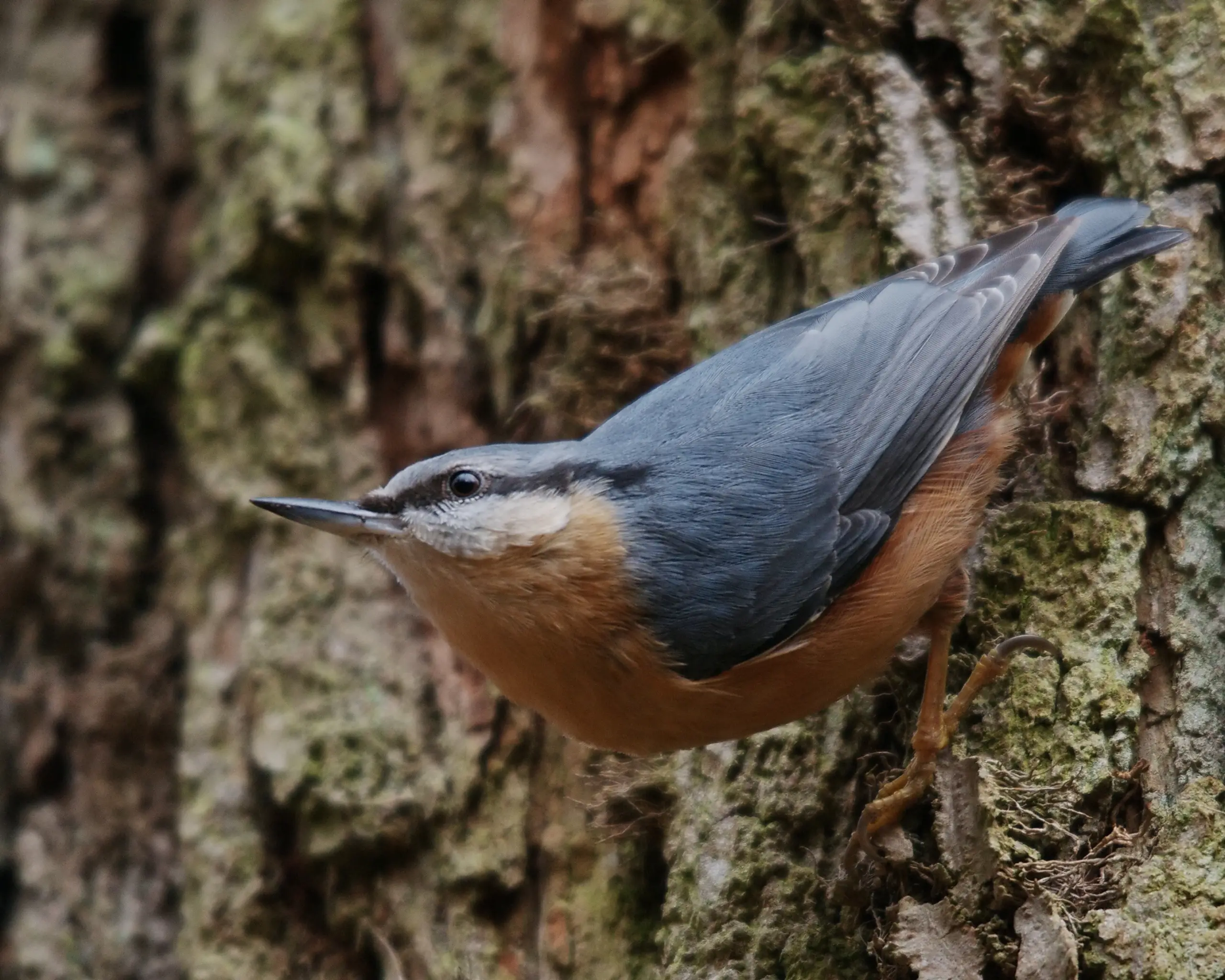
- Habitats: Nuthatches prefer mature forests characterized by large trees, which provide nesting sites and foraging opportunities. They are often found in:
- Deciduous forests: White-breasted Nuthatches frequently inhabit these areas, benefiting from an abundance of insects and seeds.
- Coniferous forests: Red-breasted and Pygmy Nuthatches thrive in these regions, utilizing tree trunks and branches for foraging.
- Mixed forests: Brown-headed Nuthatches are generally located in mature pine forests, where they exploit the pine’s resources.
Natural Habitats of Nuthatch Birds
- White-breasted Nuthatch (Sitta carolinensis): Prefers mature deciduous forests, often in urban settings with large trees such as oaks and maples. They are adaptable and may also be found in parks and gardens.
- Red-breasted Nuthatch (Sitta canadensis): Mainly inhabits coniferous forests, favoring tree species like spruce, fir, and pine. They can also be seen in mixed woodlands in higher elevations.
- Brown-headed Nuthatch (Sitta pusilla): Primarily found in the southeastern U.S., they inhabit open pine forests, especially those dominated by longleaf pines. Their social nature often leads them into mixed flocks.
- Pygmy Nuthatch (Sitta pygmaea): Occupies dense western coniferous forests, primarily employing mature ponderosa pines for shelter and nesting. Their range is often confined compared to that of their relatives.
Nuthatches exhibit remarkable abilities to adapt to their surroundings, enhancing their chances of survival in various climate zones from the snowy peaks of the Rockies to more temperate, mixed forests.
Global Distribution of Nuthatch Birds Species
Nuthatches are distributed globally, with species found across various continents. Most notably, members of the Sittidae family inhabit regions of Europe, North America, and parts of Asia.
- Eurasian Nuthatch: This species can be found across Europe and parts of Asia, particularly in old-growth forests. Their population is stable, thriving in diverse habitats.
- White-breasted Nuthatch: Found throughout North America from southern Canada to northern Mexico. They occupy urban areas, forests, and parks alike.
- Brown-headed Nuthatch: Concentrated in the southeastern U.S., they dwell in mature pine forests, often relying on these regions for nesting and foraging opportunities.
- Giant Nuthatch: Native to Southeast Asia, particularly northern Thailand, this species is endangered and primarily inhabits mixed coniferous forests, where conservation efforts are crucial for its survival.
Through their wide distribution and adaptability to different habitats, nuthatches play a vital role within the ecosystems they inhabit, contributing to forest health and biodiversity.
Seasonal Movement Patterns of Nuthatch Birds
While many bird species display migratory behaviors, nuthatches predominantly exhibit non-migratory tendencies, remaining in their respective territories year-round. This behavior is influenced by their habitat requirements and food availability.
Overview of Seasonal Movements:
- Unlike migratory birds, nuthatches are more sedentary; they do not travel long distances.
- Seasonal changes may prompt localized movements, particularly for younger birds dispersing after breeding.
Behavioral Adaptations:
- Nuthatches establish territories that protect their feeding and nesting sites.
- During winter months, they may join mixed-species flocks to enhance foraging success and improve predator awareness.
- Both males and females participate in nest building, often returning to the same nests in subsequent years.
Habitat Preferences:
- Nuthatches favor forests enriched with mature trees, providing ample resources. As such, their presence often indicates healthy forest ecosystems.
Because of their unique behavioral patterns, nuthatches exhibit remarkable adaptability to their habitats, ensuring their survival without necessitating the long migratory routes of many other bird species.
Behavior and Diet
Nuthatches are not only characterized by their agile movements but also by distinct behavioral traits and a varied diet that enables them to thrive in their forest habitats. Their behaviors reflect a unique approach to foraging and social interaction within their communities.
Foraging and Feeding Habits
Nuthatches display remarkable foraging behavior, utilizing their agility to explore various feeding techniques. These birds are adept at investigating tree bark for insects and seeds, often hanging upside down or moving sideways along branches. Their physical characteristics, such as strong toes and powerful bills, enable them to uncover hidden food sources.
- Dietary Preferences:
- Insects: An essential component of their diet, nuthatches consume a variety of insects, including:
- Beetles
- Caterpillars
- Ants
- Spiders
- Seeds and Nuts: They readily consume seeds and nuts, favoring options such as:
- Sunflower seeds
- Acorns
- Peanuts
- Insects: An essential component of their diet, nuthatches consume a variety of insects, including:
- Caching Behavior:
- Nuthatches are known for their remarkable spatial memory, allowing them to cache food items by wedging them into tree bark for later retrieval.
- They often cover these hidden caches with lichen or other debris, protecting their food from competitors.
With their energetic foraging habits, nuthatches are effective at locating food sources that support their nutritional needs in various seasons, demonstrating adaptability and resourcefulness.
Nesting Behavior of Nuthatch Birds
Nuthatches are known for their interesting nesting habits, typically utilizing tree cavities for shelter and raising their young. Their preference for existing cavities combined with their unique nesting behavior reflects their adaptability.
- Nest Location:
- Nuthatches prefer natural tree cavities, often established by woodpeckers or found in decayed wood.
- They may also excavate their own nesting sites in solid wood, a behavior not commonly seen among non-woodpecker birds.
- Nesting Materials:
- The female nuthatch is primarily responsible for constructing the nest, which involves lining the cavity with soft materials such as feathers, fur, and shredded bark to provide warmth and comfort for the eggs and chicks.
- Reproductive Behavior:
- Nuthatches are typically monogamous and often nest in the same location from year to year.
- The nest-building process typically results in a clutch size of 5 to 9 eggs, with incubation lasting around 13 to 14 days.
- Parental Care:
- Both parents participate in feeding and caring for the young, ensuring they receive a protein-rich diet consisting of insects during the nesting period.
Through their cooperative breeding and nesting habits, nuthatches contribute to the successful raising of their young while simultaneously reflecting a unique aspect of their social behavior.
Social Behavior and Flocking
Nuthatches display social behaviors that play an essential role in their survival and interactions with other bird species. Their flocking tendencies provide safety from predators and facilitate effective foraging.
- Flocking Behavior:
- Often found in mixed-species flocks, particularly during winter, nuthatches join forces with other birds such as chickadees and titmice.
- This social interaction allows for increased vigilance against potential threats and more efficient foraging in shared habitats.
- Communication:
- Vocalizations are crucial for communication within social groups. Nuthatches employ various calls to signal danger or attract mates.
- The distinct nasal calls of nuthatches contribute to their social dynamics, helping them maintain interactions within their flocks.
- Territorial Persistence:
- During the breeding season, nuthatch pairs defend their nesting territories aggressively, showcasing their fierce territorial nature.
- Males are known to vocalize prominently to establish their territory and attract mates, while engaging in displays of dominance against rival males.
Through their communal behaviors, nuthatches demonstrate adaptability and efficiency as they navigate the complexities of their forest habitats, contributing to the robust ecological communities they inhabit.
Nuthatch Calls and Songs
The vocalizations produced by nuthatches are integral to their social structure and behavior. These calls serve various functions, including communication with other nuthatches, attracting mates, and establishing territory.
Common Vocalizations of Nuthatches
Nuthatches emit a range of vocalizations that can be identified by their unique pitches and patterns.
- White-breasted Nuthatch (Sitta carolinensis): Known for its nasal calls, commonly referred to as “yank,” these birds produce variations in pitch that signal alarm, territory establishment, and communication with their mate or flock.
- Red-breasted Nuthatch (Sitta canadensis): Recognizable by its high-pitched, repeated “yank-yank” call, this species uses vocalizations to establish territory and maintain social cohesion.
- Brown-headed Nuthatch (Sitta pusilla): Their distinct, squeaky calls are synonymous with their playful nature, enabling effective communication among flock members.
- Pygmy Nuthatch (Sitta pygmaea): Famous for their high-pitched, melodious calls, which resonate through the coniferous forests they inhabit, adding to the vibrant soundscape.
Importance of Vocalizations in Territory Establishment
Vocalizations play a critical role in the social dynamics of nuthatches, particularly during territory establishment and mate attraction.
- Territorial Claims:
- Nuthatches often vocalize loudly to establish and defend their territories against intrusions from other nuthatches or bird species.
- Males are more vocal during the breeding season, using calls to mark their territory and attract females.
- Mate Attraction:
- The quality and frequency of vocalizations can influence mate selection, as females may prefer males with stronger, more consistent calls.
- Vocalizations create a sense of presence, signaling that an individual is fit and ready to breed.
- Communication within Flocks:
- The ability to communicate through varied calls allows nuthatches to maintain cohesion within their social groups.
- Alert calls help flock members respond to predators swiftly, enhancing survival rates.
Vocalizations serve as a vital component of the nuthatch’s social behavior, facilitating interaction within species while directly influencing mating success and territorial dynamics.
Attracting Nuthatches to Backyards
Creating an inviting backyard environment for nuthatches can foster opportunities for observation and enjoyment of their lively antics. Understanding their dietary preferences and habitat needs is key to attracting these fascinating birds to your outdoor space.
Best Foods for Nuthatches
To entice nuthatches to your backyard, offer a variety of foods that cater to their dietary requirements.
- Insects: Provide protein-rich options like mealworms, beetles, and caterpillars, especially during the breeding season when nuthatches need essential nutrients for their young.
- Nuts and Seeds: Nuthatches love nuts such as:
- Acorns
- Sunflower seeds
- Peanuts
- Pine nuts
- Cracked corn
- Saps and Plant Foods: Allow nuthatches to access plant saps by providing suet or sap wells created by sapsuckers.
- Commercial Bird Food: Commercial mixes specifically formulated for nuthatches can serve as an excellent food source.
Creating Suitable Habitats for Nuthatches
- Feeders: Utilize feeders that permit nuthatches to cling and feed comfortably, such as tube feeders. Suet feeders should also be available, as nuthatches are frequent visitors.
- Water Sources: Install a birdbath or shallow dish with clean, fresh water to provide hydration and bathing opportunities.
- Natural Environment: Plant trees that produce seeds and nuts while ensuring there are suitable nesting spots available through dead trees or nesting boxes with appropriate entrances.
- Avoid Chemicals: To support a vibrant ecosystem, refrain from using pesticides and herbicides, as these can diminish available food sources for nuthatches.
In providing these elements, enthusiasts can create a welcoming environment for nuthatches while enjoying the sights and sounds of nature right from their backdoor.
Fun Facts about Nuthatches
Nuthatches are captivating birds with intriguing behaviors and characteristics that make them noteworthy. Here are some fun facts about these agile little acrobats:
- Unique Descending Ability: Nuthatches are one of the few bird species adept at descending tree trunks headfirst this remarkable skill allows them to access food sources often missed by other birds.
- Species Diversity: There are at least 29 different species of nuthatches globally, with varying behaviors, habitat preferences, and dietary needs, contributing to a rich variety of ecological niches.
- Caching Behavior: Nuthatches exhibit clever food storage behavior, hiding seeds in tree bark for later retrieval, showcasing their excellent spatial memory.
- Monogamous Relationships: Many nuthatch species are known for forming monogamous pairs that often mate for life, participating together in nurturing their young.
- Lifespan: The average lifespan of a nuthatch ranges from 3 to 6 years, although with proper habitat conditions, they may live longer.
Through these fun facts and fascinating behaviors, nuthatches capture the interest of bird enthusiasts and casual observers alike, enriching our understanding of avian diversity and forest ecosystems.
Unique Behaviors of Nuthatches
Nuthatches are notable not just for their charming appearance but also for their fascinating and unique behaviors that adapt them to their forest environments.
- Acrobatic Foraging: Nuthatches exhibit remarkable dexterity while climbing trees able to move both upwards and downwards with ease. Their short tails provide stability while they navigate the bark in search of food.
- Food Caching: These birds often engage in caching behavior, hiding food items in tree bark or crevices. This preparedness ensures that they have a reliable food source during leaner seasons.
- Tool Use: Some nuthatch species, such as the Brown-headed Nuthatch, have been documented using tools to aid in foraging, showcasing an impressive level of intelligence.
- Vocalization Complexity: The variation in calls among different nuthatch species reflects their adaptability and social dynamics, serving crucial roles in communication and territory marking.
- Cooperative Breeding: In species like the Brown-headed Nuthatch, cooperative breeding is observed where multiple adults assist in raising the young, enhancing survival rates.
Nuthatches exemplify how bird species can evolve unique traits that enhance their survival and contribute to the ecological richness of their habitats.
Interesting Nuthatch Adaptations
The adaptations of nuthatches illustrate their evolutionary success within diverse habitats, allowing them to exploit available resources efficiently. Below are some fascinating adaptations:
- Physical Adaptations: Their compact body structure, strong toes, and pointed beaks are fully adapted for life among trees. The enlarged hind toe aids in climbing and gripping onto tree trunks securely.
- Behavioral Flexibility: Nuthatches can forage in various orientations, allowing access to insects hidden beneath bark or within crevices. They often change their foraging methods based on the season and available food type.
- Social Complexity: The ability to join mixed-species flocks during winter enhances their foraging efficiency and social interactions. This behavior helps them locate food more effectively while providing safety from predators.
- Caching Memory: Their impressive spatial memory allows for efficient management of food sources, critical during winter months when food is scarce. They can remember the locations of hidden food caches, showcasing an essential survival strategy.
Nuthatches are a captivating group of birds that highlight the dynamic relationship between anatomy, behavior, and environmental adaptation. Their remarkable traits enhance their adaptability in forest ecosystems, contributing to biodiversity and ecological balance.
In conclusion, nuthatches are not just ordinary birds; they are an embodiment of adaptability and intelligence in the avian world, showcasing behaviors that reflect their ecological significance and captivating charm. With their unique identification features and fascinating lifestyles, these birds offer a rich area of study for ornithologists and a delightful experience for bird watchers across the globe.





